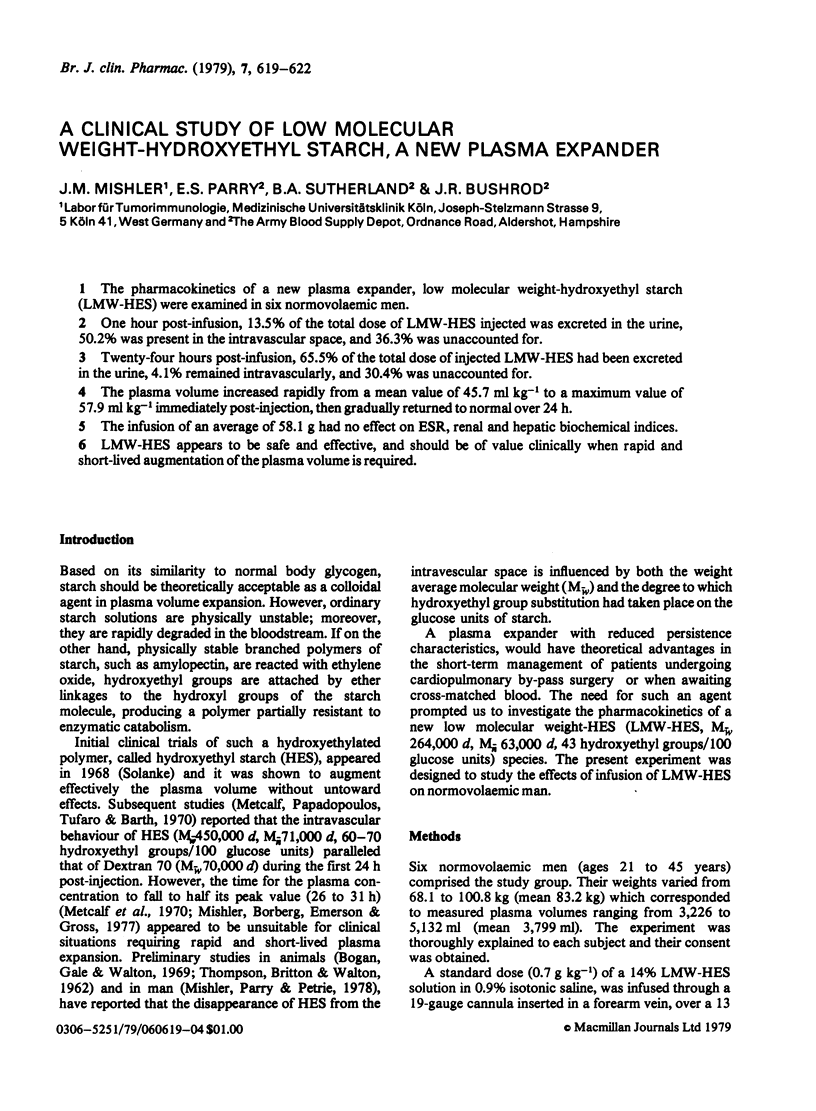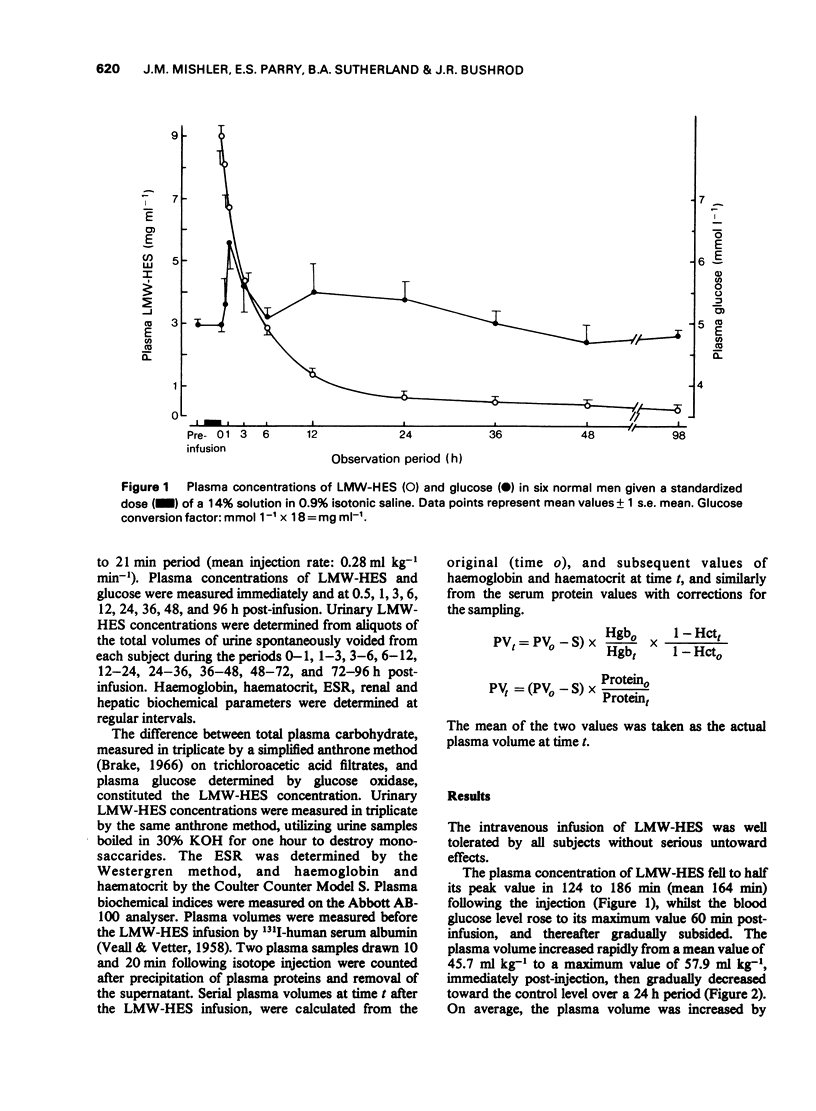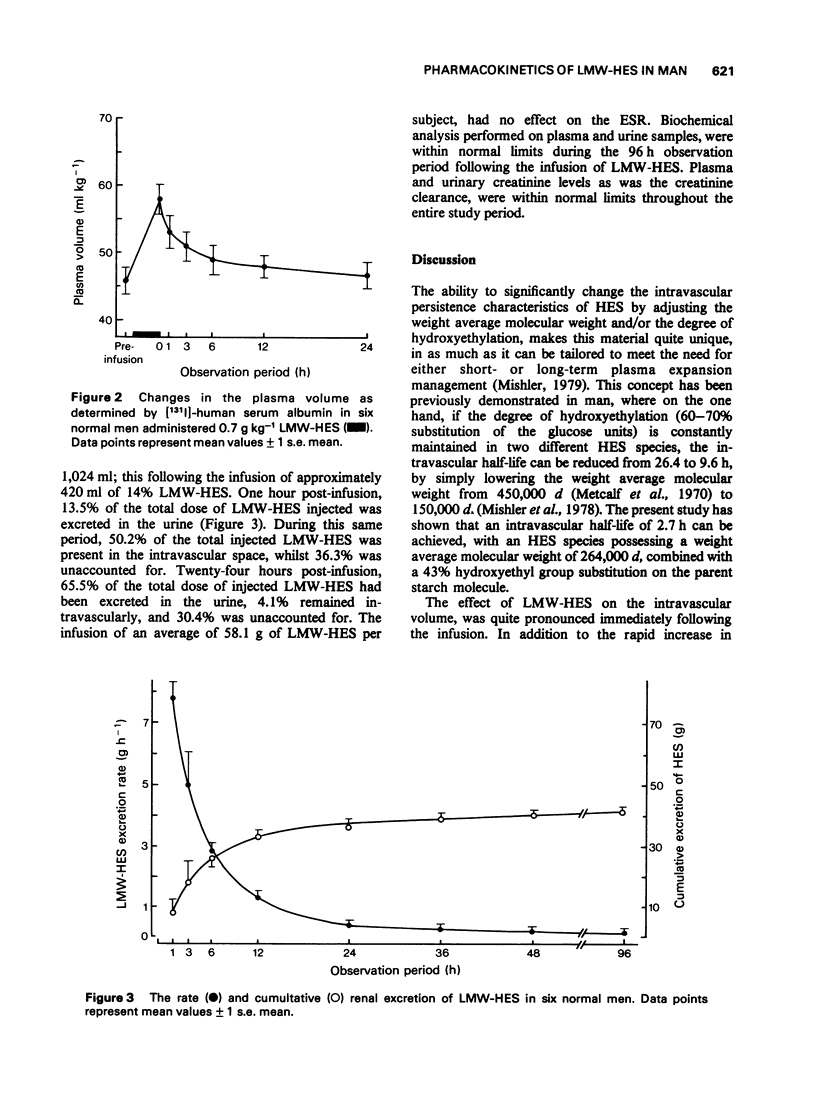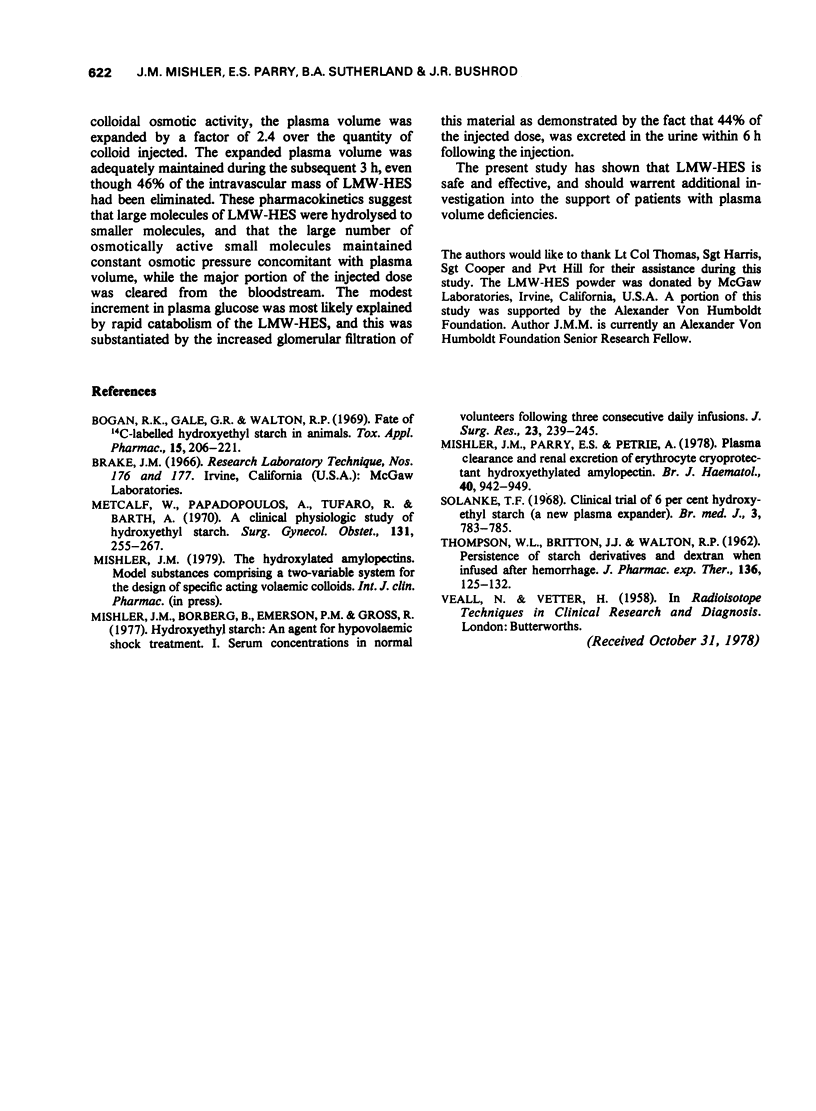Abstract
1. The pharmacokinetics of a new plasma expander, low molecular weight-hydroxyethyl starch (LMW-HES) were examined in six normovolaemic men. 2. One hour post-infusion, 13.5% of the total dose of LMW-HES injected was excreted in the urine, 50.2% was present in the intravascular space, and 36.3% was unaccounted for. 3. Twenty-four hours post-infusion, 65.5% of the total dose of injected LMW-HES had been excreted in the urine, 4.1% remained intravascularly, and 30.4% was unaccounted for. 4. The plasma volume increased rapidly from a mean value of 45.7 ml kg-1 to a maximum value of 57.9 ml kg-1 immediately post-injection, then gradually returned to normal over 24 h. 5. The infusion of an average of 58.1 g had no effect on ESR, renal and hepatic biochemical indices. 6. LMW-HES appears to be safe and effective, and should be of value clinically when rapid and short-lived augmentation of the plasma volume is required.
Full text
PDF



Selected References
These references are in PubMed. This may not be the complete list of references from this article.
- Metcalf W., Papadopoulos A., Tufaro R., Barth A. A clinical physiologic study of hydroxyethyl starch. Surg Gynecol Obstet. 1970 Aug;131(2):255–267. [PubMed] [Google Scholar]
- Mishler J. M., Borberg H., Emerson P. M., Gross R. Hydroxyethyl starch: an agent for hypovolemic shock treatment. J Surg Res. 1977 Oct;23(4):239–245. doi: 10.1016/0022-4804(77)90171-8. [DOI] [PubMed] [Google Scholar]
- Solanke T. F. Clinical trial of 6 per cent hydroxyethyl starch (a new plasma expander). Br Med J. 1968 Sep 28;3(5621):783–785. doi: 10.1136/bmj.3.5621.783. [DOI] [PMC free article] [PubMed] [Google Scholar]
- THOMPSON W. L., BRITTON J. J., WALTON R. P. Persistence of starch derivatives and dextran when infused after hemorrhage. J Pharmacol Exp Ther. 1962 Apr;136:125–132. [PubMed] [Google Scholar]


